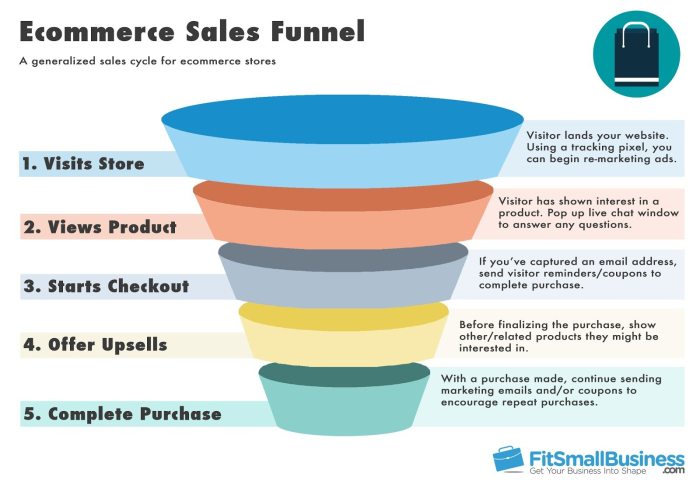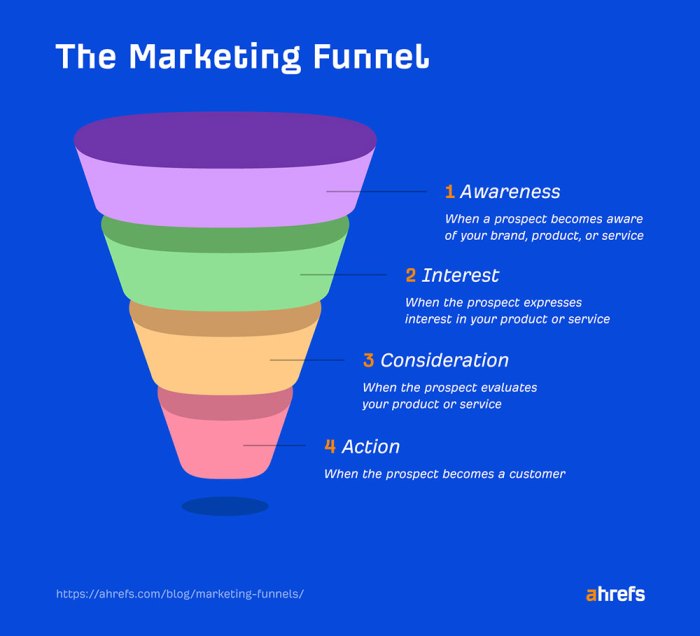Sales Funnel Optimization is key to boosting sales. Learn how to fine-tune your funnel for maximum success.
From analyzing bottlenecks to implementing seamless transitions, this guide covers it all.
Overview of Sales Funnel Optimization
A sales funnel is a visual representation of the customer journey from initial contact to making a purchase. It is crucial in the sales process as it helps businesses understand where potential customers drop off and how to guide them towards conversion. Sales funnel optimization involves improving each stage of the funnel to increase conversions and revenue.
The Importance of Sales Funnel Optimization
Sales funnel optimization is essential for businesses to maximize their sales potential and improve their ROI. By analyzing data and customer behavior at each stage of the funnel, businesses can identify bottlenecks and implement strategies to address them. This leads to increased conversions and ultimately higher revenue.
- Identifying and Addressing Bottlenecks: By optimizing the sales funnel, businesses can pinpoint areas where customers are dropping off and take steps to improve the user experience or messaging to keep them engaged.
- Improving Conversion Rates: Through A/B testing, personalization, and targeted marketing, businesses can optimize their sales funnel to increase the likelihood of conversion at each stage.
- Increasing Customer Lifetime Value: By nurturing leads and providing a seamless buying experience, businesses can not only increase initial conversions but also retain customers for repeat purchases.
Key Stages of a Typical Sales Funnel
A typical sales funnel consists of several stages, including awareness, interest, decision, and action. Optimization plays a critical role in each stage to guide potential customers smoothly through the funnel towards making a purchase.
- Awareness: At this stage, businesses focus on creating brand awareness and attracting potential customers. Optimization involves targeted advertising, content marketing, and lead generation strategies.
- Interest: Once customers are aware of the brand, businesses aim to generate interest and educate them about the products or services offered. Optimization includes personalized messaging, email campaigns, and engaging content.
- Decision: In this stage, customers are considering making a purchase. Optimization strategies may involve offering discounts, product demos, or customer testimonials to encourage conversion.
- Action: The final stage involves converting leads into customers. Optimization techniques such as streamlined checkout processes, retargeting ads, and incentives can help seal the deal and drive sales.
Analyzing the Sales Funnel

When it comes to optimizing your sales funnel, analyzing the existing process is crucial in identifying areas for improvement and maximizing conversions.
Identifying Bottlenecks and Opportunities, Sales Funnel Optimization
- Examine each stage of the sales funnel to pinpoint where potential bottlenecks may occur, hindering the flow of leads and conversions.
- Look for opportunities to streamline the process, remove any unnecessary steps, and enhance the overall user experience.
Tracking Key Metrics
- Monitor key metrics such as conversion rates, bounce rates, and average order value to gauge the effectiveness of your sales funnel.
- Conversion rates indicate how well leads are transitioning into customers, while bounce rates highlight areas where visitors are leaving the funnel prematurely.
- Average order value helps you understand the amount customers are spending per transaction, providing insights into potential upselling or cross-selling opportunities.
Tools for Analysis
- Utilize analytics tools like Google Analytics, Kissmetrics, or Mixpanel to track and analyze the performance of your sales funnel in real-time.
- These tools offer valuable insights into user behavior, conversion paths, and areas for improvement within the funnel.
A/B Testing Importance
- Implement A/B testing to compare different variations of your sales funnel elements, such as landing pages, CTAs, or email campaigns.
- By testing different approaches simultaneously, you can determine which strategies resonate best with your audience and drive higher conversion rates.
- A/B testing provides concrete data to inform future optimization efforts and refine the sales funnel for optimal performance.
Strategies for Sales Funnel Optimization

When it comes to optimizing your sales funnel, there are several key strategies to consider. From creating personalized content to focusing on mobile optimization, each stage plays a crucial role in driving conversions and maximizing revenue.
Personalized Content and Targeted Messaging
One of the most effective ways to improve sales funnel performance is by delivering personalized content and targeted messaging to your audience. By understanding their needs and preferences, you can tailor your messaging to resonate with them on a deeper level.
- Utilize customer data to create targeted content that speaks directly to their pain points and interests.
- Segment your audience based on their behavior and demographics to deliver more relevant messaging.
- A/B test different messaging strategies to determine what resonates best with your audience.
Compelling Calls-to-Action (CTAs)
Creating compelling calls-to-action is essential for driving conversions and guiding prospects through the sales funnel. A strong CTA can make a significant impact on your conversion rates and ultimately increase revenue.
- Use action-oriented language that prompts users to take the next step, such as “Buy Now” or “Sign Up Today”.
- Place CTAs strategically throughout your website and marketing materials to maximize visibility.
- Experiment with different designs, colors, and placements to optimize your CTAs for maximum effectiveness.
Mobile Optimization
With the rise of mobile devices, optimizing your sales funnel for mobile users is more important than ever. A seamless mobile experience can significantly impact your conversion rates and overall sales performance.
- Ensure your website is mobile-responsive and provides a user-friendly experience on all devices.
- Optimize load times and reduce friction for mobile users to streamline the conversion process.
- Implement click-to-call buttons and other mobile-specific CTAs to make it easy for users to take action on their phones.
Implementing Sales Funnel Optimization
Implementing sales funnel optimization is crucial for businesses looking to maximize their conversions and revenue. By following a step-by-step guide and aligning sales and marketing teams, companies can effectively improve their funnel performance.
Aligning Sales and Marketing Teams
To ensure successful funnel optimization, it is essential to align sales and marketing teams. Both teams need to work together seamlessly to create a cohesive customer journey. By sharing data, insights, and goals, they can better understand customer behavior and tailor their strategies accordingly.
- Hold regular meetings between sales and marketing teams to discuss goals and performance metrics.
- Encourage open communication and collaboration to identify areas for improvement in the funnel.
- Use a shared CRM system to track customer interactions and ensure a unified approach to lead nurturing.
Creating Seamless Transitions Between Funnel Stages
Creating seamless transitions between funnel stages is key to providing a better user experience. Customers should feel guided through each stage of the funnel without any friction or confusion. By optimizing touchpoints and messaging, businesses can keep leads engaged and moving smoothly towards conversion.
- Personalize content based on where the customer is in the funnel to maintain relevance.
- Use clear and compelling calls-to-action to encourage progression to the next stage.
- Implement automation tools to streamline the process and reduce manual intervention.
Examples of Successful Businesses
Several businesses have effectively optimized their sales funnels to drive conversions and revenue. Companies like Amazon, Salesforce, and HubSpot have demonstrated the power of strategic funnel optimization through personalized messaging, targeted campaigns, and data-driven decision-making.
- Amazon’s recommendation engine leverages customer data to suggest relevant products, increasing cross-selling opportunities.
- Salesforce utilizes lead scoring and automated workflows to prioritize leads and nurture them through the funnel efficiently.
- HubSpot’s inbound marketing approach focuses on creating valuable content to attract and engage leads at every stage of the funnel.





